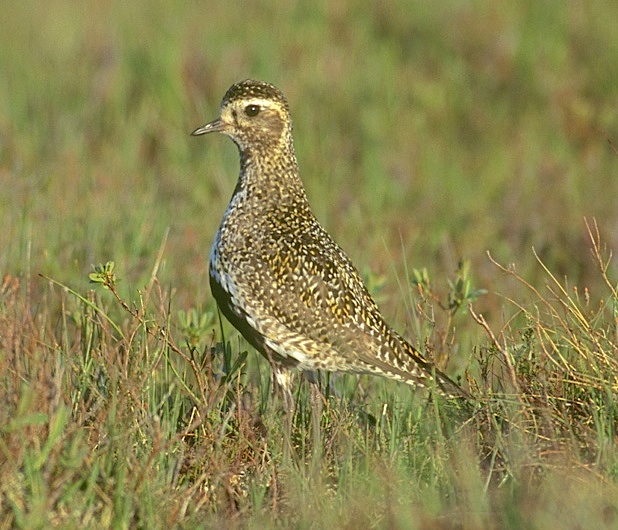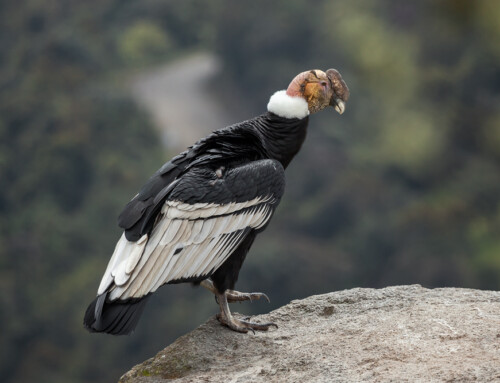I am a conservation scientist at the RSPB. I hope that you’re not thinking ‘Oh, I didn’t know the RSPB had conservation scientists- although if you are thinking that, then the point I want to make has already been made!
But what do you really know about the conservation science work of the RSPB? I would be willing to bet that you probably know more than the average person on the street, but I would also be willing to bet that what you know is only the tip of the iceberg compared to what we actually do. I work in RSPB science and I am constantly finding out new things about what we do!
Did you know that we work on globally threatened species? For example, our research work on Sociable Lapwing, with BirdLife International and other partners (see here), is making a real difference to our understanding of why this species of the vast steppes of central Asia, is declining so rapidly. Initially, nest trampling by livestock was thought to be the problem, but after monitoring thousands of nests over multiple years, and individually marking hundreds of adults, we discovered that breeding success was sufficient to maintain populations but adult survival seemed low compared to other similar species (Sheldon et al 2013). Subsequent work tracking this species over its migratory range has revealed high hunting pressure at some of the key staging areas. Now we know what and where the problems are for Sociable Lapwing, we can start to address them.

These are just a couple of examples of the breadth and diversity of the work undertaken by RSPB conservation scientists. I could have equally talked about our work on Asian vultures, seabird tracking, migrants research or farmland birds to name a few more – and we’re still only touching the tip of the iceberg!
I think as scientists we get excited about collecting and analysing data and we are great at writing papers and presenting our work at conferences. While this may reach the rest of the scientific community, or at least the scientists working in these areas, we are not so great at reaching out to other audiences – practitioners, policy-makers, our members and the wider public. Shouting about our discoveries and telling the world about the great science that the RSPB does and the impact of that science for conservation can only be a good thing. In conservation science, perhaps more than other scientific disciplines, it is so important that we communicate our findings because so often the things we discover have practical or policy relevance and if we don’t communicate this effectively with our practitioner and policy colleagues then what is the point of our discovery in the first place?
We believe the UK boasts one of the most active and vibrant conservation science communities in the world. Up and down the country in universities and wildlife organisations there are people trying to find the 21st Century solutions to the problems facing our native wildlife. We believe that we need to tell more people about what we do and we need to celebrate the achievements of the UK’s best conservation scientists.
So, how is the RSPB going to tell more people about what we do? In February next year, we will launch the RSPB Centre for Conservation Science – a new hub for our academic research work. We will have a new web portal which will open up our work to the conservation, scientific and policy community. We will also publish a review of the best of RSPB science over the last 10 years, which will also give an insight into some of our scientists.
And, how is the RSPB going to celebrate the achievements of the UK’s best conservation scientists? At the launch in February, we will present the inaugural RSPB Conservation Science awards, three of which will be presented annually. There will be a prize for the most promising PhD student, another for a scientific paper published in 2013 that is likely to make a significant contribution to conservation and then a final award will be presented to a member of RSPB science staff.
Nominations are currently open for the first of these awards and we are calling on our colleagues in university departments across the UK to send us their suggestions for promising young scientists whose PhD work is likely to make a significant contribution to the conservation of any species of animal or plant, communities or habitats anywhere in the world. Full details are available at www.rspb.org.uk/science.
This is just a part of the RSPBs plan to improve our science communications but what are you going to do in 2014?
View RSPB Conservation Science annual reports
References
Bellamy, P,E,, Stephen, L,, Maclean, I,S,, Grant, M,C. 2012. Response of blanket bog vegetation to drain-blocking. Applied Vegetation Science 15: 129-135. View abstract
Sheldon, R.D., Kamp, J., Koshkin, M.A., Urazaliev, R.S., Iskakov, T.K., Field, R.H., Salemgareev, A.R., Khrokov, V.V., Zhuly, V.A., Sklyarenko, S.L. & Donald, P.F. (2013) Breeding ecology of the globally threatened Sociable Lapwing Vanellus gregarius and the demographic drivers of recent declines. Journal of Ornithology 154: 501-506. View abstract
Tanneberger, F. & Wichtmann, W. (eds). 2011. Carbon credits from peatland rewetting: climate, biodiversity, land use. Schweizerbart Science Publishers, Stuttgart. 223pp.
Wilson, J.D., Anderson, R., Bailey, S., Chetcuti, J., Cowie, N.R., Hancock, M.H., Quine, C., Russell, N., Stephen, L., & Thompson, D.B.A. 2013. Modelling edge effects of mature forest plantations on peatland waders informs landscape-scale conservation. Journal of Applied Ecology. DOI: 10.1111/1365-2664.12173. View abstract
Wilson, L., Wilson, J., Holden, J., Johnstone, I., Armstrong, A., Morris, M. 2010. Recovery of water tables in Welsh blanket bog after drain blocking: discharge rates, time scales and the influence of local conditions. Journal of Hydrology 391: 377-386. View abstract
Images
Golden Plover © Chris Gomersall (rspb-images.com); peatland at Bowness Common © Andy Hay (rspb-images.com)
Blog with #theBOUblog
If you want to write about your research in #theBOUblog, then please see here.




